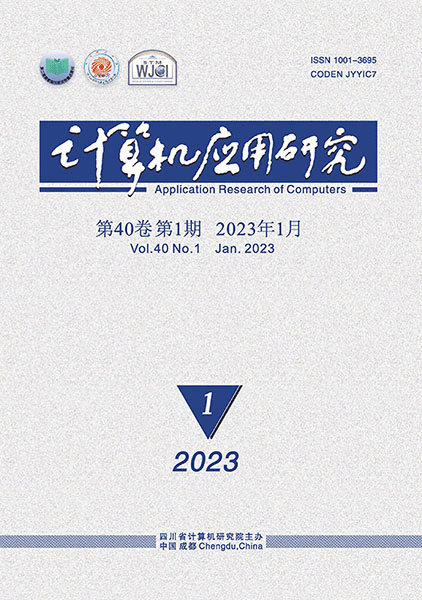Multi-label crowd answer aggregation of digital cultural heritage based on adaptive graph regularization and joint low-rank matrix factorization
Multi-label crowd answer aggregation of digital cultural heritage based on adaptive graph regularization and joint low-rank matrix factorization
1. Gansu Provincial Research Center for Conservation of Dunhuang Cultural Heritage, Dunhuang Gansu 736200, China
2. Cultural Heritage Digitization Institute, Dunhuang Academy, Dunhuang Gansu 736200, China
3. School of Computer Information & Management, Inner Mongolia University of Finance & Economics, Hohhot 010070, China

摘要
Multi-label answer aggregation problem aims to estimate the ground truth labels of samples by aggregating a large number of non-expert annotations collected by crowdsourcing. Due to the high annotation cost, multiple sample categories and uneven distribution of digital cultural heritage data, it brings great challenges to multi-label answer aggregation of datasets. Previous methods mainly focus on single-label problems, ignoring the label relevance of multi-label tasks. To some extent, most multi-label aggregation methods consider label correlations but are sensitive to noises and outliers. To solve these problems, this paper proposed a multi-label answer aggregation method based on adaptive graph regularization and joint low-rank matrix factorization AGR-JMF. Firstly, it divided the input annotation matrix into two parts: pure annotations and noise annotations. Then, it constructed the association matrix between labels by adaptive graph regularization method for pure annotations. Finally, in order to realize the multi-label answer aggregations, it used labeling quality, label relevance, and the behavior attributes similarity between annotators to guide the low-rank matrix factorization. Experiments on real-world datasets and MGF dataset show that AGR-JMF has obvious advantages over existing algorithms in terms of aggregating accuracy and identifying unreliable annotators.
关键词
基金项目
甘肃省敦煌文物保护研究中心开放课题(GDW2021YB05)
陇原青年创新创业人才(个人)资助项目(2022LQGR40)
国家重点研发计划资助项目(2020YFC1522701,2020YFC1522705)
出版信息
DOI: 10.19734/j.issn.1001-3695.2022.09.0442
出版期卷: 《计算机应用研究》 Printed Article, 2023年第40卷 第4期
所属栏目: Algorithm Research & Explore
出版页码: 1119-1129
文章编号: 1001-3695(2023)04-026-1119-11
发布历史
引用本文
王春雪, 徐琳琳, 俞天秀. 基于自适应图正则化与联合低秩矩阵分解的数字文化遗产多标签众包答案聚合方法 [J]. 计算机应用研究, 2023, 40 (4): 1119-1129. (Wang Chunxue, Xu Linlin, Yu Tianxiu. Multi-label crowd answer aggregation of digital cultural heritage based on adaptive graph regularization and joint low-rank matrix factorization [J]. Application Research of Computers, 2023, 40 (4): 1119-1129. )
关于期刊

- 计算机应用研究 月刊
- Application Research of Computers
-
刊号
ISSN 1001-3695
CN 51-1196/TP
《计算机应用研究》创刊于1984年,是由四川省科技厅所属四川省计算机研究院主办的计算技术类学术刊物。
《计算机应用研究》瞄准本学科领域迫切需要的前沿技术,及时反映国内外计算机应用研究的主流技术、热点技术及最新发展趋势。主要刊载内容包括本学科领域高水平的学术论文、本学科最新科研成果和重大应用成果。栏目内容涉及计算机学科新理论、计算机基础理论、算法理论研究、算法设计与分析、区块链技术、系统软件与软件工程技术、模式识别与人工智能、体系结构、先进计算、并行处理、数据库技术、计算机网络与通信技术、信息安全技术、计算机图像图形学及其最新热点应用技术。
《计算机应用研究》拥有众多高层次读者、作者,读者对象主要为从事计算机学科领域高、中级研究人员及工程技术人员,各高等院校计算机专业及相关专业的师生。多年来《计算机应用研究》的总被引频次及Web下载率一直名列本学科同类学术刊物前茅,所刊发的学术论文以其新颖性、学术性、前瞻性、导向性、实用性而备受广大读者的喜爱。
收录和评价
- 第二届国家期刊奖百种重点期刊
- 中国期刊方阵双效期刊
- 全国中文核心期刊(北大2023年版)
- 中国科技核心期刊
- 中国科学引文数据库(CSCD)来源期刊
- RCCSE中国核心学术期刊
- 中国计算机学会会刊
- 2020—2022年科技期刊世界影响力指数(WJCI)报告收录期刊
- 中国科技期刊精品数据库全文来源期刊
- 中国学术期刊综合评价数据库来源期刊
- 《中国期刊网》《中国学术期刊(光盘版)》来源期刊
- 2017—2019年中国国际影响力优秀学术期刊(自然科学与工程技术)
- 中国精品科技期刊顶尖学术论文(F5000)项目来源期刊
- 《中国工程技术电子信息网》《电子科技文献数据库》来源期刊
- 英国《科学文摘》(INSPEC)来源期刊
- 《日本科学技术振兴机构数据库》(JST)来源期刊
- 俄罗斯《文摘杂志》(AJ, VINITI)来源期刊
- 美国《艾博思科学术数据库》(EBSCO)全文来源期刊
- 美国《剑桥科学文摘(自然科学)》(CSA(NS))核心期刊
- 波兰《哥白尼索引》(IC)来源期刊
- 美国《乌利希期刊指南(网络版)》(Ulrichsweb)收录期刊





